The Cartier Santos is not just a watch; it's an emblem of pioneering spirit, innovation, and the timeless elegance of Cartier. Since its inception, the Cartier Santos has been at the forefront of watchmaking, seamlessly blending functionality with luxury. This iconic timepiece has traversed over a century, evolving with the times while maintaining its distinguished allure. As we delve into its rich history, we uncover how the Cartier Santos became a cornerstone in the world of luxury watches, embodying the essence of modernity and tradition.
Table of Contents
- The Historic Roots of the Cartier Santos
- The Transition - Santos Dumont to Sports Watch
- Which Versions of the Cartier Santos Should You Look Out For?
The Historic Roots of the Cartier Santos
The genesis of the Cartier Santos dates back to 1904, a time of rapid technological progress and innovation. Brazilian aviator Alberto Santos-Dumont, a friend of Louis Cartier, expressed his frustrations with the impracticality of pocket watches during flight. In response, Cartier designed a flat wristwatch with a square bezel, thus giving birth to the first mass-produced men’s wristwatch and, notably, the first pilot's watch. This creation was not only pivotal for its functionality but also set a new standard in watch aesthetics. The Cartier Santos showcased a design shift towards the Art Deco style, which would later define the 1920s and 1930s. Its square case was robust, featuring screws that echoed the industrial might of the Eiffel Tower, while the blackened Roman numerals mirrored the elegance of Parisian streets. By 1911, the Santos-Dumont watch, equipped with a movement from Jaeger, entered full production, marking the beginning of a new era in men's wristwatches.
The Transition - Santos Dumont to Sports Watch
As the Cartier Santos evolved, it transitioned from a pioneering aviator's tool to a symbol of luxury sports watches. This transformation was characterized by Cartier's bold decision to embrace steel, a material previously unused by the brand for watches. The introduction of steel, combined with gold accents, marked a daring innovation, blending durability with luxury. This two-tone aesthetic, highlighted by the gold screws on the bezel and bracelet, became a hallmark of the Santos design. The Cartier Santos was reborn, not just as a timepiece but as a fashion statement, leading the way in the two-tone trend and cementing its status as a versatile and enduring luxury icon.
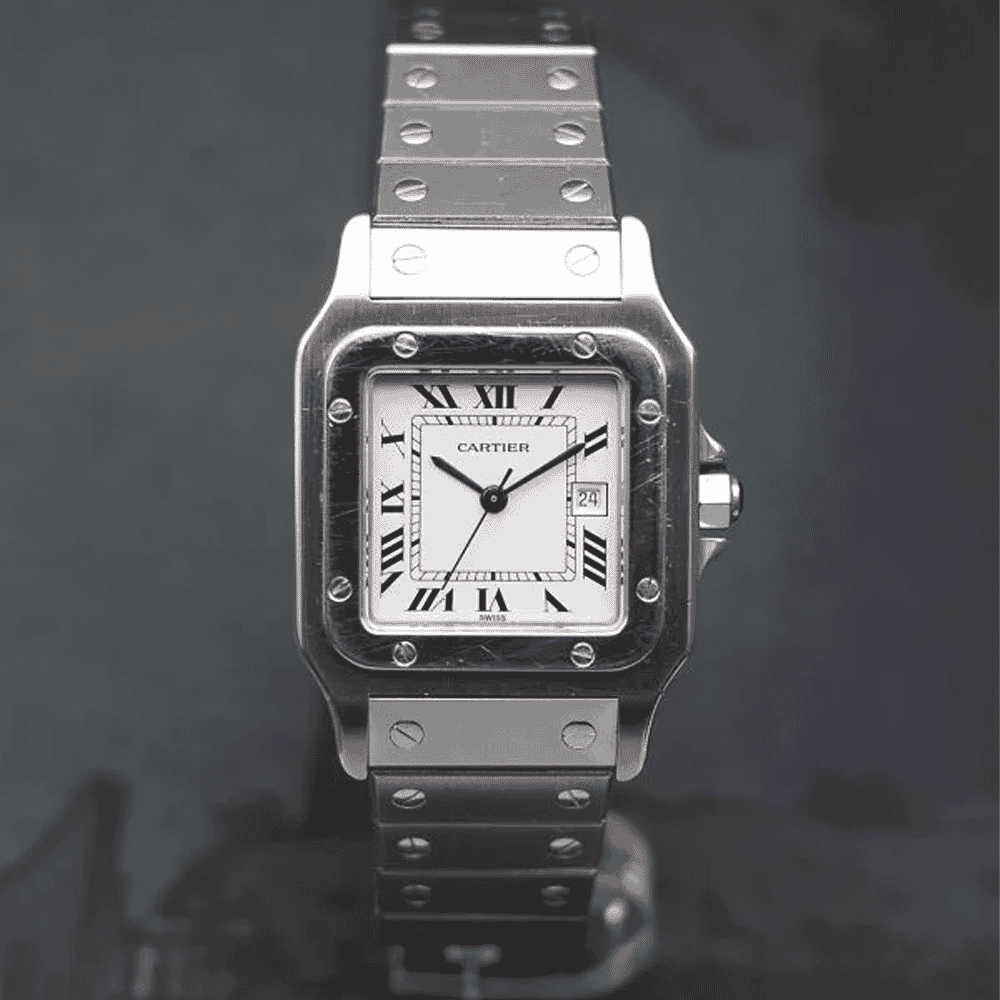
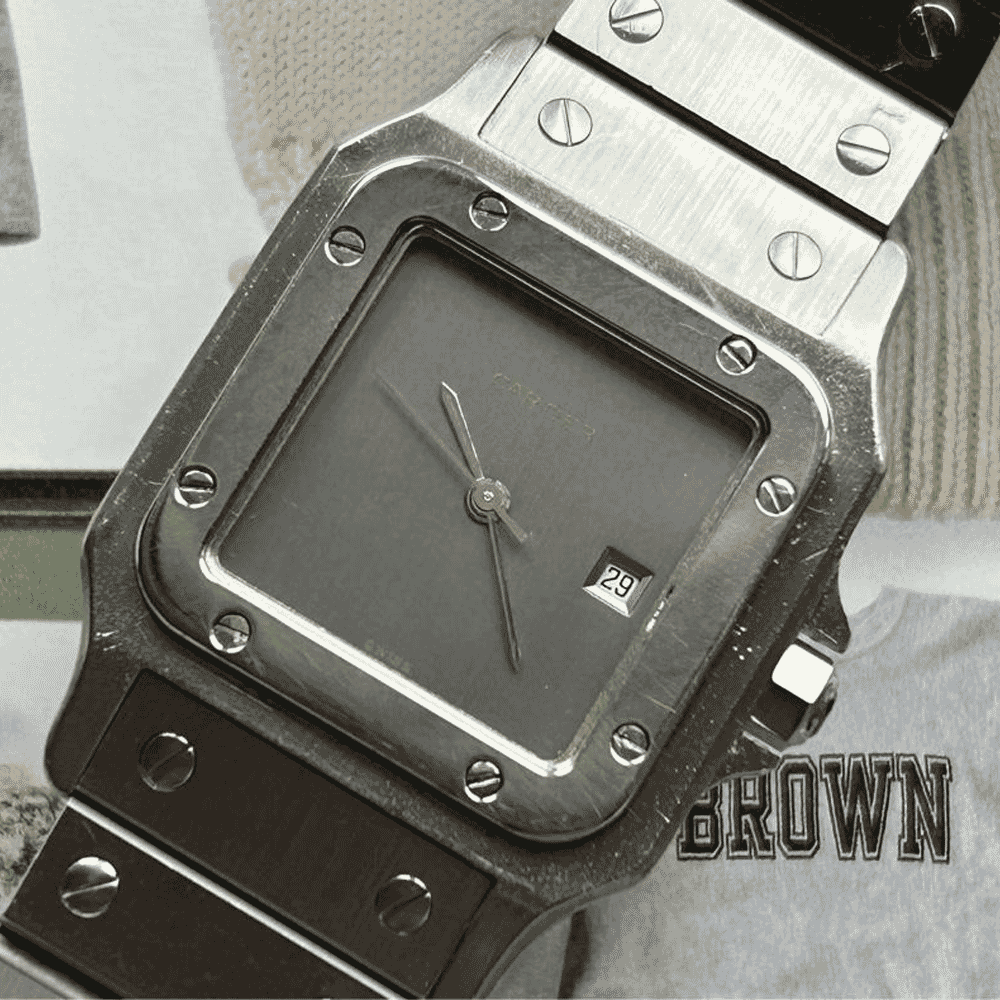
Which Versions of the Cartier Santos Should You Look Out For?
1984 Cartier Santos Ghost ref. 2960
The Cartier Santos Ghost, with its square "Caree" case and all-steel composition, houses a rare and desirable grey dial. This model stands out for its simplicity, featuring a vertically brushed finish, a subtle gold Cartier logo, and a date window. The blue cabochon on the winding crown adds a touch of elegance to this minimalist design.
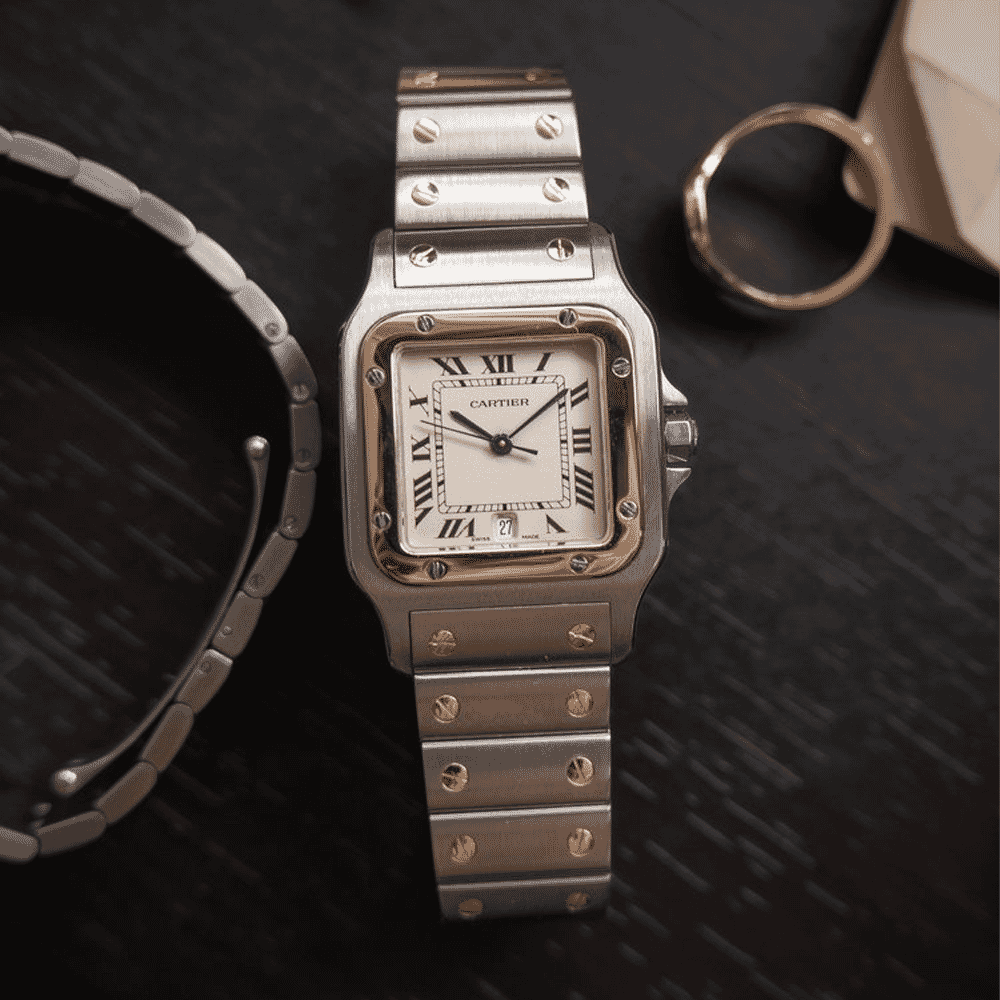
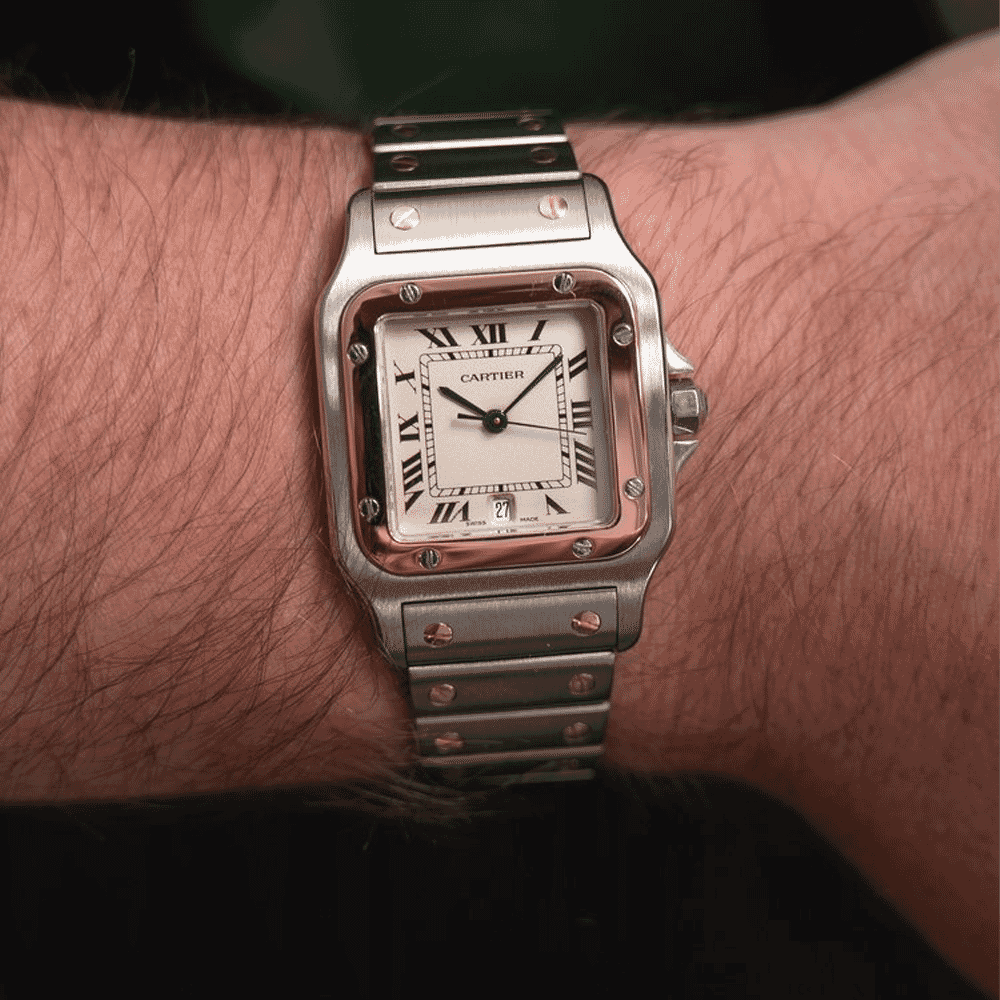
Cartier Santos de Galbee ref. 1566
In 1987, the Santos underwent a significant makeover, emerging as the Santos Galbée. With its smoother, more curved case, it offered a more comfortable fit on the wrist than its predecessor. This redesign not only enhanced its wearability but also retained the classic elegance that the Santos line is known for.
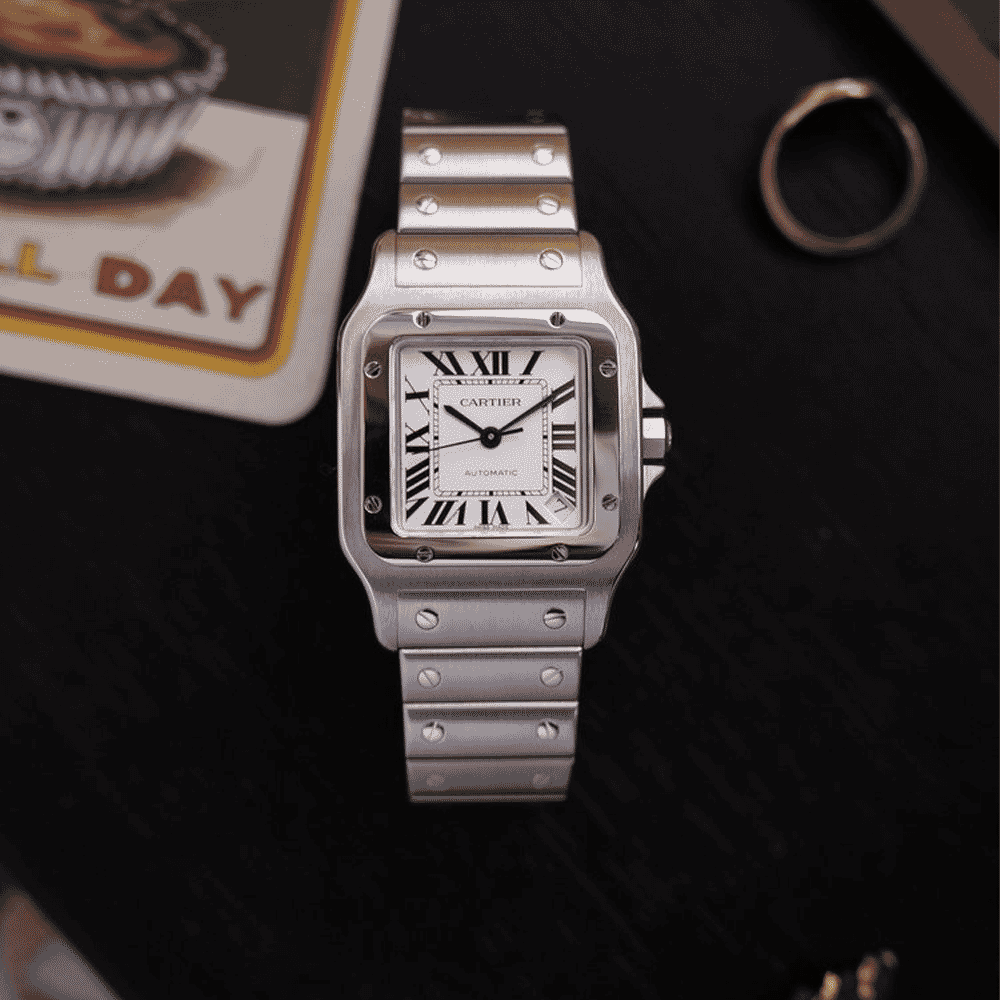

Cartier Santos Galbee XL
The Santos Galbée XL, introduced in 2005, reflected the trend towards larger watches. Measuring 32 x 45 mm, it featured an automatic ETA 049 calibre and a date window, cleverly positioned to maintain the dial's balance. The bimetal steel and yellow gold case preserved the iconic Santos look while adapting to contemporary tastes.
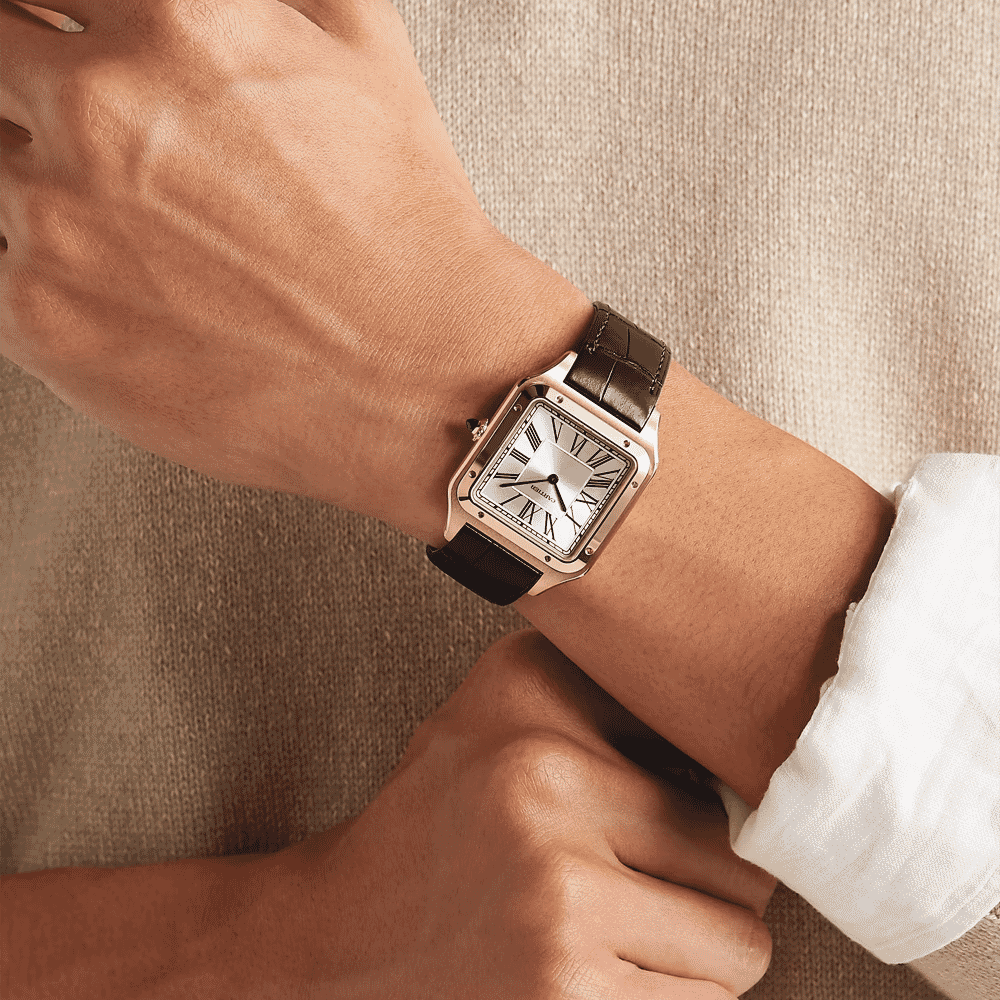
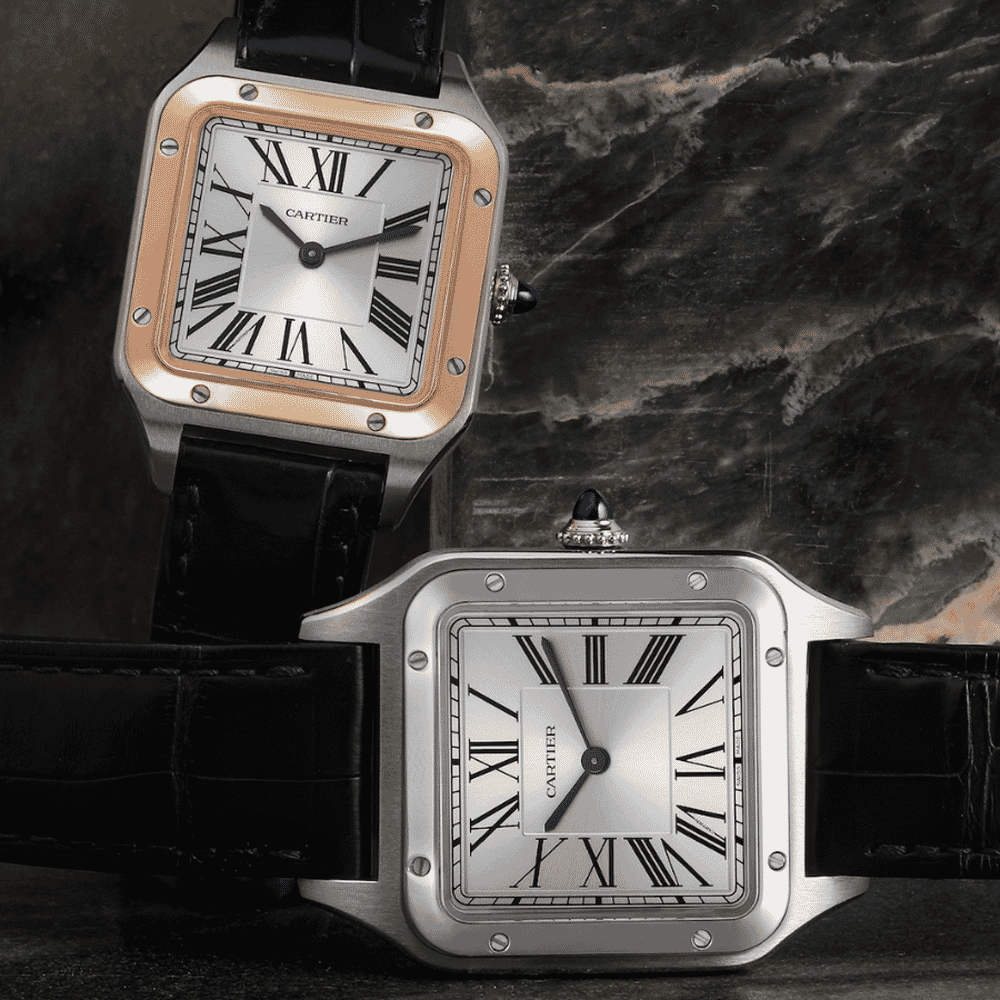
Cartier Santos-Dumont
The Santos-Dumont models, particularly in yellow gold, offered a classic alternative to the sportier versions of the 1970s and 1980s. These watches, available in both "gentleman's" and "ladies'" sizes, epitomized elegance with their "ultra-thin" design and were powered by the renowned F. Piguet caliber 21. The CPCP version, especially in platinum with a salmon dial, represents a peak of collectibility, blending vintage charm with modern craftsmanship.
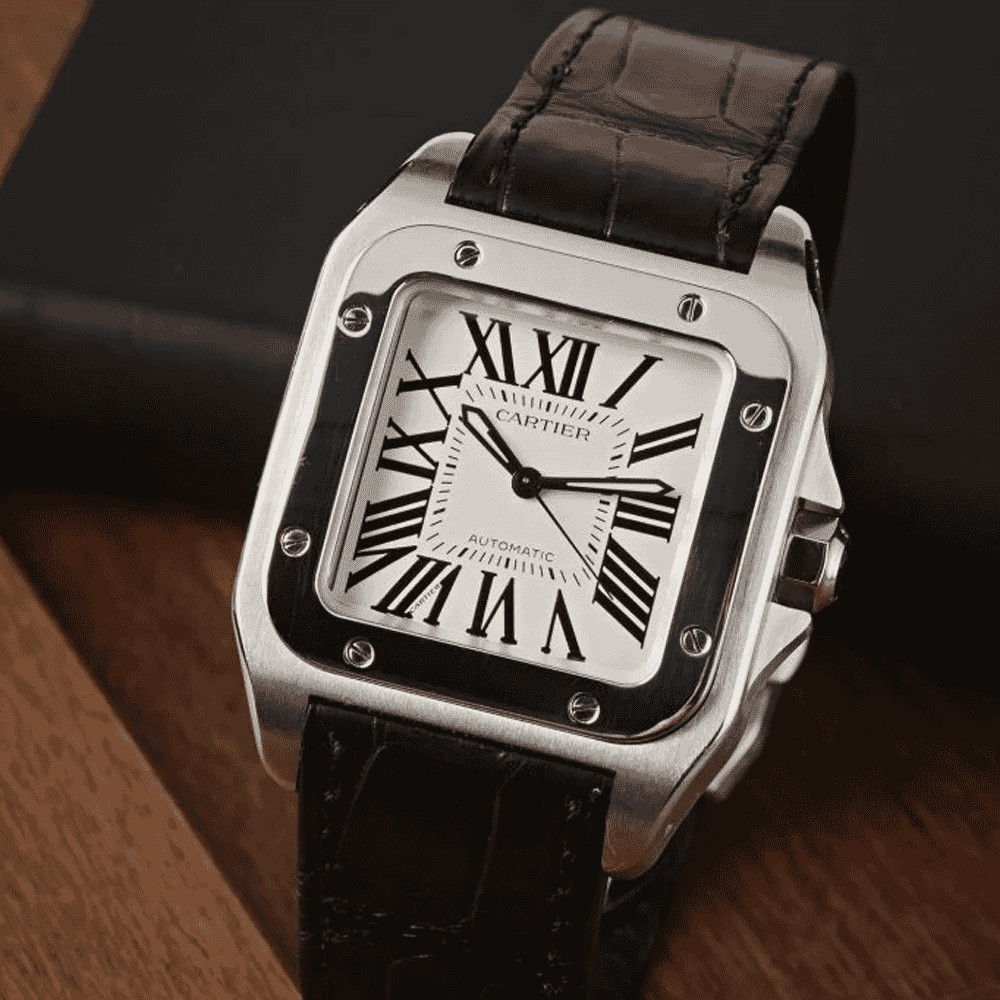

The Cartier Santos 100
The Santos 100 collection, launched in 2004 to commemorate the 100th anniversary of the original Santos, modernized the classic design for a new era. With its larger case size and the adoption of modern materials like black PVD stainless steel, the Santos 100 collection brought the Santos into the 21st century, maintaining its legacy as a pioneer in luxury watchmaking.
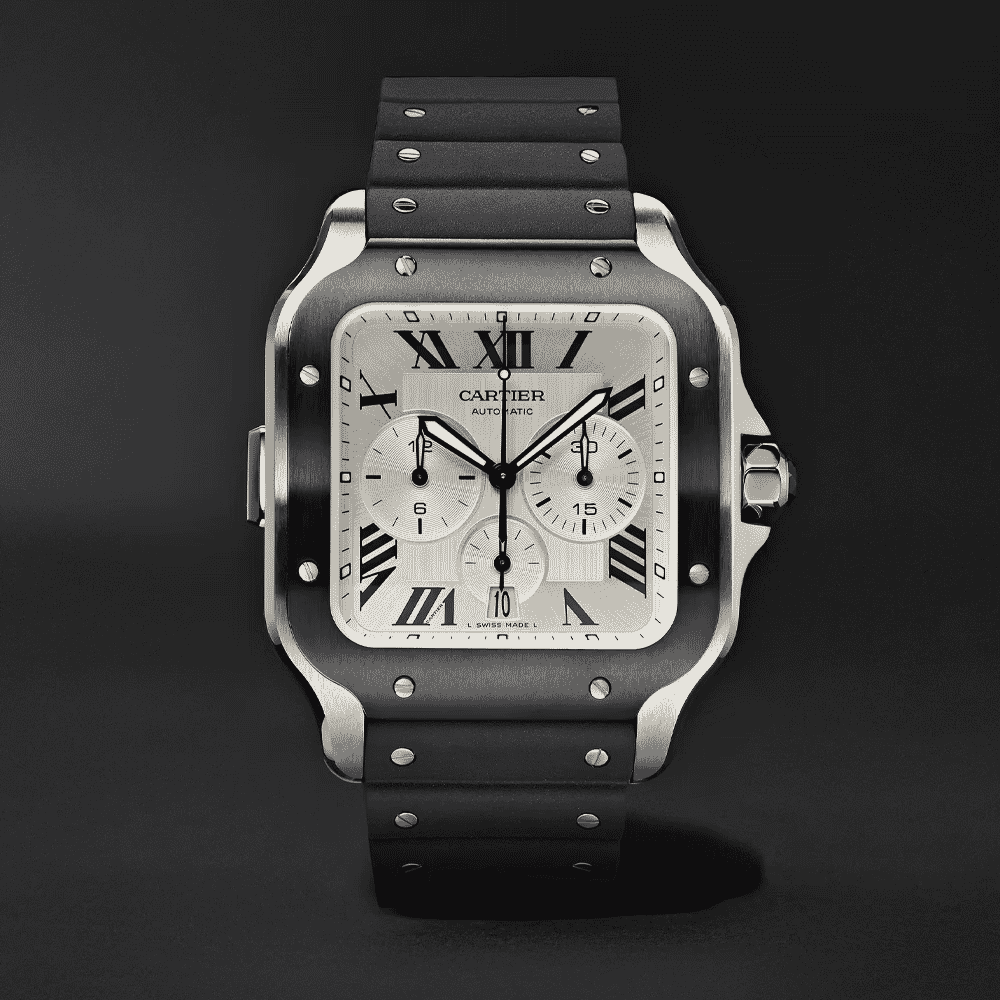

The Cartier Santos Chronograph
The Santos Chronograph represents a significant innovation with its in-house 1904-CH MC automatic movement and unique design features, such as the chronograph pusher on the left side of the case. This model, particularly in steel and black steel versions, underscores Cartier's commitment to blending functionality with luxury, securing the Santos's place as a versatile and enduring icon in the competitive world of luxury timepieces.
Not sure which Rolex to buy? Our guide to the best Rolex investment watches has got you covered




